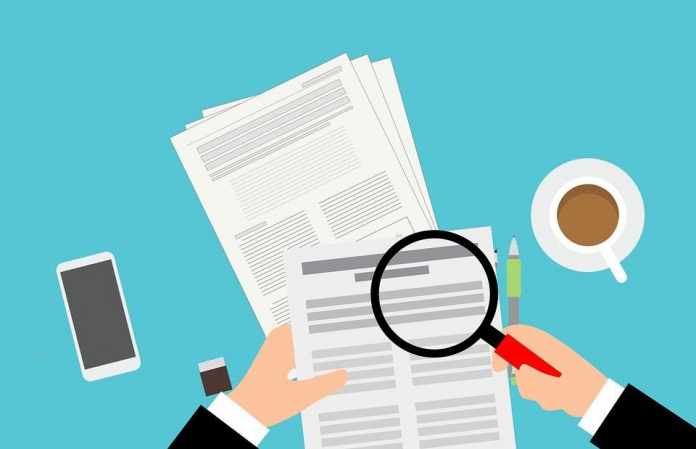In the simplest terms, a Clean Business Audit is an unbiased and independent examination and evaluation of a company’s financial statements to determine compliance with tax laws and reporting accuracy. Smart businesses know they should clean their financial records before a business audit to avoid any surprises or embarrassment at the IRS’s hands.
Often, conducting a 360-degree financial analysis requires extensive time and effort. But, maintaining Clean Business Audit books of accounts proves worthwhile in the long-run. Cleaning up your accounting records can increase brand credibility, enhance management’s decision-making, and offer a thriving business operation setting.
No matter how risk-averse your business structure or industry is, if your books are messy, you could be in trouble. However, many corporations and small businesses hesitate or procrastinate in tidying up their books. The reasons behind this delay are the overwhelming complexities involved in hiring an external auditor or firm. The first step is always the hardest; it sounds cliché, but it applies to this setting.
Before you set the Clean Business Audit preparations in order, it’s a good idea to identify any existing problems. Next, look for help in resolving those problems. If you sit on it and wait, it may result in the issues piling up and requiring more extreme solutions. Depending on the kind of situation, the problem may take a significant amount of to fix. For example, you’re a newbie in the market and are still learning the ropes of the trade. If the IRS informs you that you are about to be audited, but you’re clueless about your total income or tax you owe, that’s a big problem. Fortunately for entrepreneurs and self-employed folks, there are scores of helpful online tools and services available like this Freelance Income Tax Calculator to make the job easier.
Asking yourself the following questions can help you prepare for a year-end business audit and make the process seem a little less daunting.
Table of Contents
What is The Game Plan?
Developing a plan of action is the first thing a business needs to do for a smooth audit. The plan could include allocating extra time for audit preparations, establishing communication with the involved personnel, and watching over the audit fieldwork. It might sound too far-fetched, but businesses should see audit preparation as a year-long process. Additionally, you should assemble an audit committee at your organization if one doesn’t already exist. Members of the audit committee are responsible for selecting, overseeing, and liaising with the independent auditor.
Do The Retained Earnings Measure Up To Tax Returns?
A business’s tax returns must align with its retained earnings under the shareholder’s equity section of the balance sheet. If you’re low on funds after payments to the company shareholders, you might be in danger.
Matching these two items provides a grounding for the entire audit process. In case of an error or discrepancy, you’ll know the problem is within the current financial year, and previous tax returns won’t require correction. However, suppose there’s no sign of discrepancy. In that case, you’ll have to thoroughly examine the financial statements and tax return filings of the past several years.
Is There A Checklist Of Essential Documents?
The most crucial step of getting cleaned up for an audit is securing all the necessary financial documents related to your company’s operations. Gather all the paperwork from the current and past fiscal years and ensure it’s readily available.
It’s a good idea to come up with a checklist of the documents that the IRS requires from a business. Since the IRS can randomly audit your organization without prior announcement, it’s better to prepare for such a circumstance beforehand. Below are some commonly requested documents by the IRS:
- Canceled checks
- Receipts
- Bills
- Loan agreements
- Legal documentation of the business
- Lost or stolen documents
- Bank account statements
What Were The Past Mistakes?
Review the past year’s audit adjustments, complications during the process, and recommendations about internal controls. Go through the paperwork for said issues and their solutions. Taking note of past mistakes can make you aware of repeating them, and it can also be a beginning for a more comprehensive self-review.
Are There Changes in Day-to-Day Operations?
You need to assess and examine recent changes in daily activities too. For example, there could be a new reporting standard in the market now. Perhaps the company launched a new product, but it performed poorly in the market. The company may have discontinued some subsidiaries or operations. The company could even have appointed a new CEO and made changes in its organizational structure. Shifts in business activities like these have accounting and reporting implications. Hence, it is vital to inform the auditor about them during the planning phase of the audit.
Are Cash Inflows and Outflows Reconciled?
If a business wants to function well, it should always reconcile its cash-inflows and outflows with its bank statements. Cash and bank balance reconciliation is essential for paying debts to creditors and invoices to suppliers. They also assist in following-up with customers on accrued invoices. Ideally, you should reconcile each bank account with cash balances once every four weeks or so.
Have You Performed A Self-Review?
Time to check the depth of the waters. Start by examining the overall soundness of your financial statements. After the annual closing entries, go through all reports, work papers, and schedules to ascertain the amounts reconcile with those of the trial balance. Read and equip yourself with the information needed to explain any changes in statement line items throughout the years.
Are Inventory Levels In-Check?
Inventory checking or stock-taking uses data points to represent the available resources a company can quickly convert into cash. It provides an audit of the existing company stock. Organizations should time inventory counts carefully to extract useful information about the company’s condition. Timely detection of any profits or losses in a company’s retained earnings is necessary to accurately represent the available inventory.
Do You Have Appropriate Records of Assets?
If you want a Clean Business Audit, it is imperative to record your company’s tangible and intangible assets accurately. Intangible assets include intellectual property assets that add value to the business but don’t have a physical presence, such as patents and copyrights. In normal circumstances, asset balances should fluctuate over time instead of remaining fixed. Since asset balances can only be positive, you should identify and resolve any negative balances as a part of the auditing process.
To Conclude:
Only a few things are as terrifying as preparing for an external audit. Public limited companies must conduct an annual audit to detect any loopholes, false representations of financial statements, and insider fraud. The article above provides efficient ways to reduce an audit’s anticipation anxiety, e.g., proper planning, organizing data, reconciling accounts, and verifying inventory levels.








